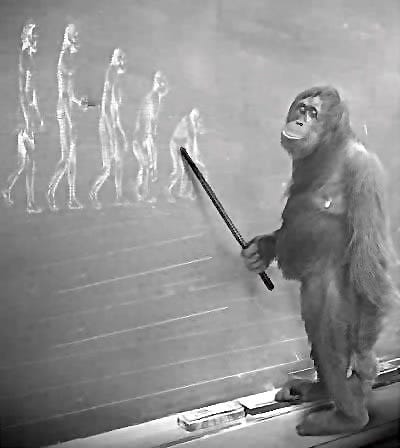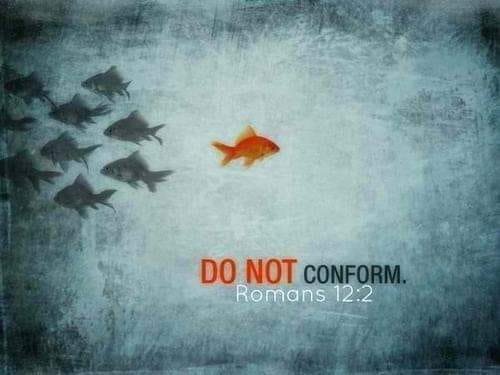Theories of Life Origins
The question of our origins is one of the most profound mysteries humanity faces. For centuries, people have debated the mechanisms behind life’s complexity, the age of the Earth, and the events that shaped it. If the biblical account of creation is true, the natural world we observe should align with its claims. Astonishingly, this is exactly what we observe when we examine the scientific and historical record with an open mind. From the sudden appearance of life to the intricate design of living systems, from evidence of a global flood to the lack of transitional forms, the world bears the unmistakable fingerprints of a Creator.
Evolutionary theory, by contrast, struggles to account for the complexity, order, and design that permeate nature. While evolutionary theories dominate much of the scientific landscape, a growing body of evidence challenges these assumptions and supports a young Earth model consistent with biblical creation. Recent discoveries reveal that many natural processes reached their optimal functionality far more recently than evolutionary models predict. This challenges the assumption of random, gradual development over billions of years and strongly supports the special creation of a young Earth.
These are purely philosophical questions that science seeks to answer. After all, science is about finding answers to our questions. Analyzing and evaluating all sides of evolution and life origins is essential in understanding theses questions. It is only then that one can begin to contemplate the meaning of life and the wonder of it all. There are four basic questions that science seeks to answer regarding life’s origins.
Who am I?
Where did I come from?
What is my purpose here?
Where am I going?
But science is limited to the present. We can’t directly observe past events, we can only study their results which still exist in the present. So how is science tested? There are at two ways to research. The first is by laboratory data and the second is field data. This can be done by observing, testing, repeating and predicting outcomes with empirical data. Past, non-repeatable events can only be tested by theory and circumstantial evidence. This results in only educated guesses at best that cannot be proven empirically. Then results and outcomes are published. Nevertheless, we need to be aware of three potential problems with evidence.
First, evidence may be incomplete.
Ever read a good murder mystery? Just before the end you think you know “who done it.” At the last minute the author reveals a crucial bit of evidence you didn’t know before. You are annoyed to find that the culprit was the butler, not the chauffeur. Why did you reach a wrong conclusion? Because you were basing your ideas on incomplete evidence.
A prime example of incomplete evidence occurred in the U.S. in the 1920s. Noted anthropologist Henry Fairfield Osborn declared that a single fossilized molar tooth found in Nebraska in 1922 came from an extinct ancestor of man called Hesperopithecus. He presented an elaborate scenario showing how Mr. and Mrs. Hesperopithecus looked, what they ate, where they lived, what kind of animals lived nearby, and so on. The 1922 Illustrated London News even printed a double-page picture of them in their native habitat.
Because of Osborn’s reputation, many accepted this scenario as fact. Defense attorney Clarence Darrow even alluded to it in an attempt to berate prosecutor William Jennings Bryan at the famous “Scopes Trial”. The 1925 Scopes Trial in Dayton, Tennessee, has been deemed the most important trial in American history. In this case, teacher John Scopes was tried for violating a Tennessee law prohibiting the teaching of evolution in public schools. Perhaps you saw Hollywood’s inaccurate version of the trial in the motion picture “Inherit the Wind”.
A few years after the trial ended with Scopes being convicted, another fossil tooth was found, identical to the one Osborn had used as his basis for Hesperopithecus. This one was still in the jaw to which it belonged. The jaw belonged to an extinct pig! Why were the “experts” so wrong in their elaborate story? Because they started with incomplete evidence. We should ask ourselves, how much evidence exists about the beginning of everything? We have no way to know. Then how much evidence is still missing? We have no way to know that either. As a result, we should exercise healthy skepticism.
Secondly, evidence may be deliberately withheld.
Students are told that life on earth began in a mixture of chemicals known as the “primordial soup” which came together into amino acids, which then assembled themselves into proteins, which then assembled themselves into cells. But the chemicals in this mythical soup cannot combine properly in the presence of free oxygen. Therefore, the students are told that the early atmosphere did not contain free oxygen - which it escaped from inside the earth much later. Geologists know better. It is well known in professional geologic circles that traces of free oxygen -- iron oxide, uranium oxide, and so on -- have been found in even the bottom layers of Precambrian sediment, all the way down to basement rock. But if you check the textbooks, this evidence is nowhere to be found. Why not? It’s deliberately withheld because it doesn’t fit the theory of evolution!
Thirdly, evidence may be falsified.
You’ve probably heard because of Haeckel’s drawings that a human baby goes through all the stages of evolution as it develops in the womb before birth. This is known as “recapitulation” in evolutionist literature. This started in the early 1860s. Ernst Haeckel, a young doctor on the faculty of Jena University in Germany, seized on the growing popularity of evolution.
It is more than a scientific deception; it was a scientific forgery. Haeckel published drawings that he said illustrated his laboratory experiments, in which he had dissected embryos of different kinds of creatures at various stages of development. The drawings apparently showed the embryos demonstrating the stages of evolutionary development. Others tried to duplicate Haeckel’s experiments, but obtained completely different results.
Evolutionary "proofs" have been discredited, including:
Archaeopteryx- Fraudulent fossil assembly. Two fossil pieces glued together!
Lucy- Misrepresented as a human ancestor. Identical to a pygmy chimp; only 21% fossil found yet display 100% of skeleton in museums; Owen Lovejoy “fixing Lucy’s hip so she can walk upright!
Dawin’s finch beaks (adaptation; variation only) supports microevolution only-not macroevolution.
Peppered moths- Staged photographs.
The Horse series
Ida fossil - 1983 ( an extinct Lemur)
Morgi fossil- “Morganucodon” ( a rat )
Piltdown Man- 1912: A deliberate hoax combining an ape jaw and a human skull.“Eoanthropus dawsoni” (ape jaw combined with human skull; filed the teeth; then stained it to look ancient).
Nebraska Man- 1922: “Hesperopithecus Harldcooki” meant “ape of the western world” (based on single tooth; presented as key evidence at Scopes trial in Dayton, Tennessee 1925; belonged to an extinct species of wild American pig called Prosthennops)
Haeckels embryos- (fraudulent drawings; confessed in 1874 but still used in textbooks up to 1997!
Homolgy- common ancestor or common designer?
Theories of Life Origins
Throughout history, seven major theories have sought to explain the origins of life:
1. Atheism: No God, life arose through natural processes without divine intervention, evolution is the 1st cause.
2. Agnostic: view that the existence of God or the supernatural is unknown or unknowable.
3. Theistic Evolution: God used evolutionary processes, interpreting Genesis allegorically, God used evolution to create.
4. Gap Theory: developed in 1804- inserted time gap between Genesis vs 1 & 2. Lucifer fell then God recreated the earth. Dinosaurs & millions of years of time are inserted between verse 1 & 2.
5. Day-Age Theory: developed in 1823. Not literal days but 1,000 year periods of time. Interprets 2 Peter 3:8 as one day= 1,000 years of creation time.
6. Revelation Day Theory: God revealed the creation account to Moses in six days, not when creation occurred.
7. Progressive Old Earth Creation: developed in 1945. Life was created in stages over long ages of time geologically in millions of years.
8. Young Earth Creation Theory: Life was created in six literal 24-hour days, as described in Genesis. Among these, the Young Earth Creation Theory aligns most closely with both the biblical record and scientific evidence.
Thank you for reading Dr. Aaron Judkins Substack. Your subscription supports my work and allows me to bring you more articles like this.
As a token of our appreciation, we're offering you a limited-time offer of 20% off a paid subscription for your first year.
PS. If you loved this article, you’ll love “The Preponderance of Evidence for a Young Earth” and my interview on “Beyond the Paradigm”.









